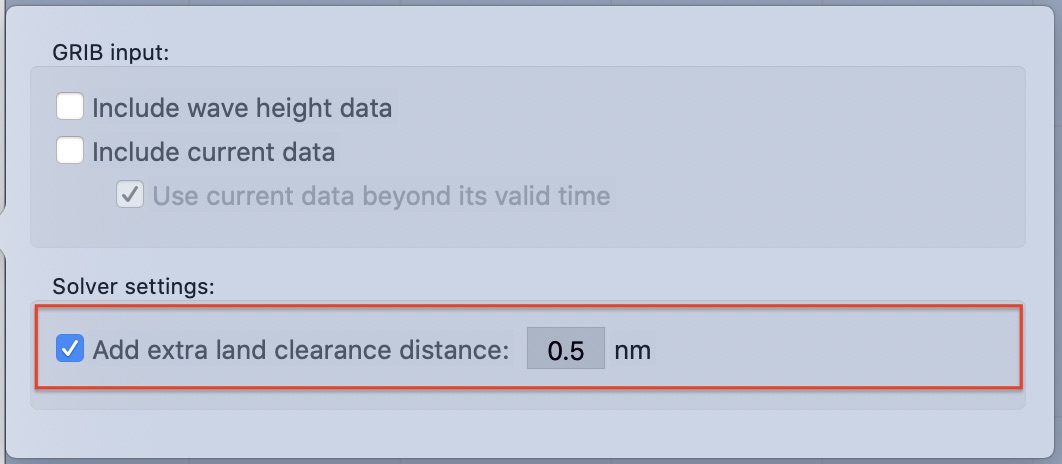
Recall that isochrones are built from a large collection of possible positions and segments that are generated from the previous isochrone. For each point on the previous isochrone, a fleet of boats is sent out in all directions. As part of the isochrone generation, each of these candidate travel segments is tested against all possible land boundaries.
The solver will not accept a travel segment which crosses a land boundary. However, the solver will accept segments which approach land very closely, or just barely pass a point of land. These close approaches to land can be avoided, if you prefer, by setting a land clearance value.
When the land clearance value is set, the solver will not include isochrone segments which approach closer to land than the indicated value.
There is an exception to this rule, related to the starting point and target point. If either of these points is closer to land than the clearance value, then the clearance value is relaxed for some small radius around the (start or target) point. You can observe this by examining the generated isochrones.
There are some examples of the land clearance value in the Getting Started | Boundaries section of this site. For example:
The solvers performance is not affected to any great extent when you turn this option on. You should set a value you think is appropriate, ignoring any performance concerns you may have.

